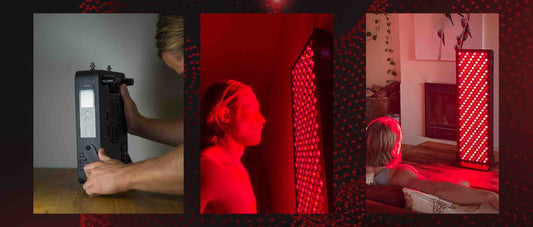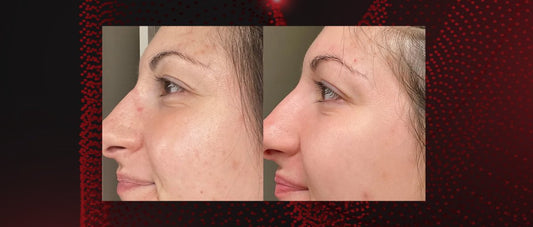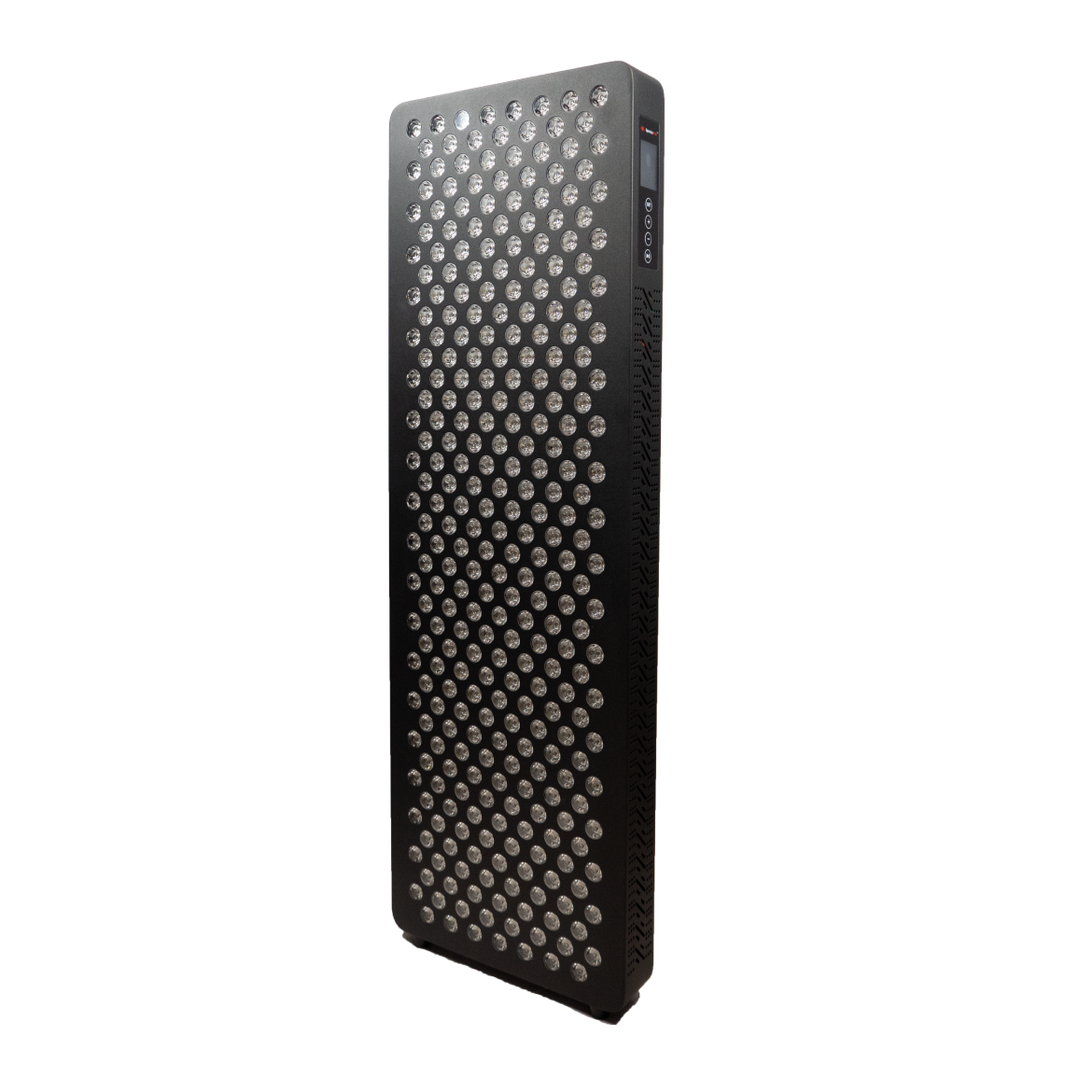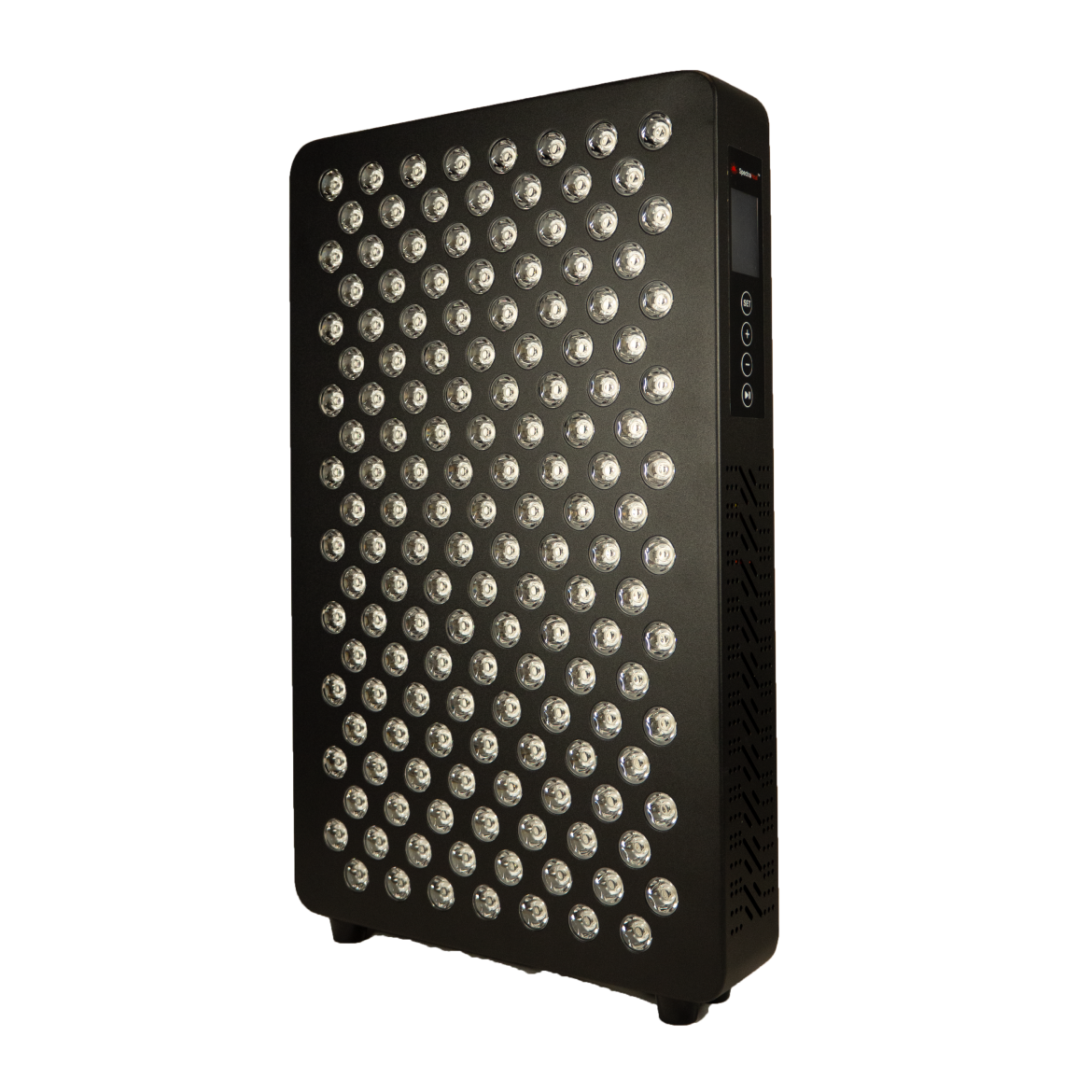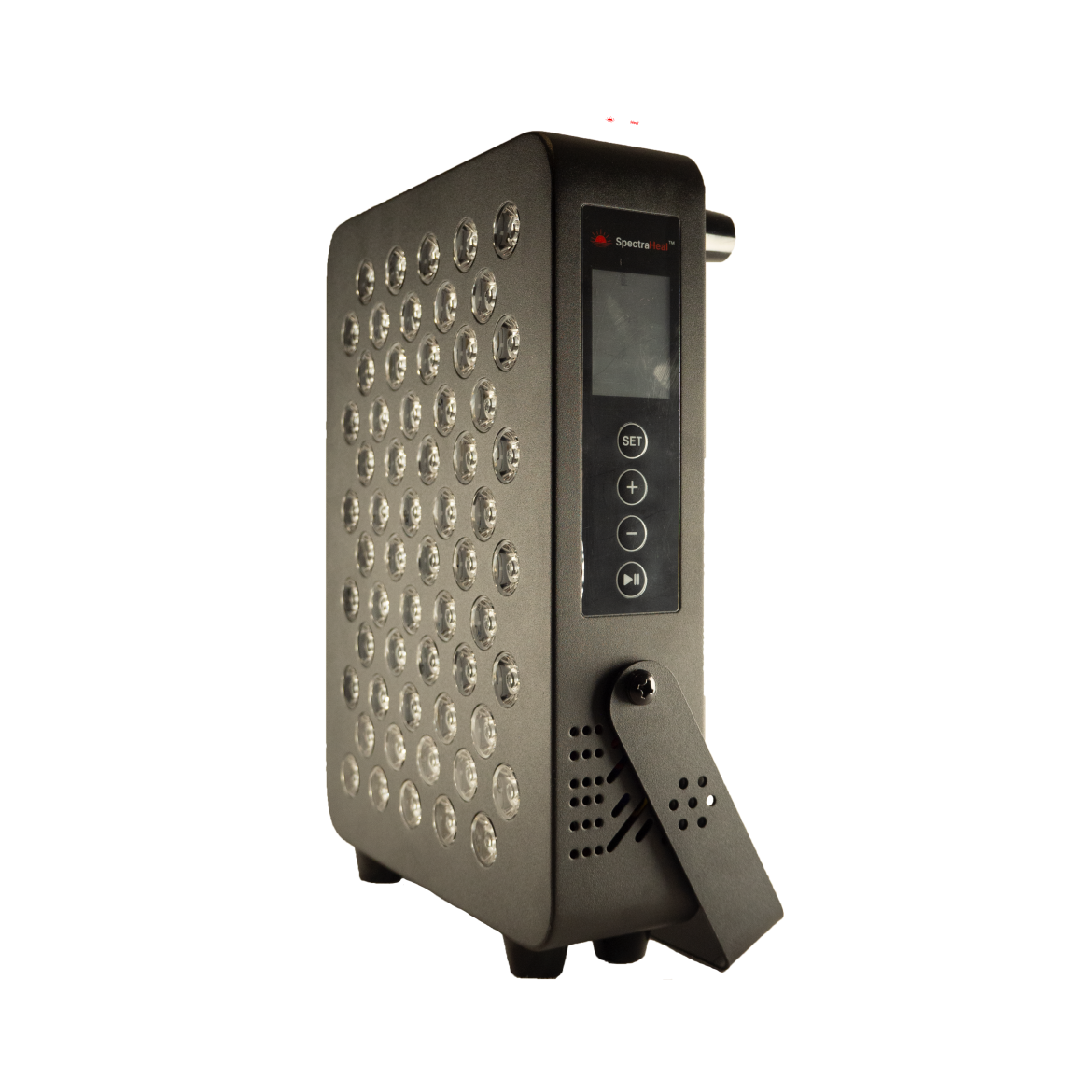Is red light therapy the key to better muscle performance, endurance, and growth?
Athletes are turning to this innovative method in search of an edge.
In this article, we delve into the science behind red light therapy and its potential impact, helping athletes make informed decisions about its integration into their training routines......
Red light therapy, also known as low-level laser therapy (LLLT) or photobiomodulation (PBM), harnesses the power of red and near-infrared (NIR) light to stimulate cellular processes.
This non-invasive treatment targets mitochondria, the powerhouse of cells, enhancing their function and subsequently influencing various physiological responses.
RedLight Therapy Benefits For Muscles, Strength and Endurance:
Here a study that shows the impressive results of RLT on muscles:

In this study, we investigated the effects of combining strength training with light-emitting diode therapy (LEDT) in identical twin soccer players.
Through genetic analysis and various assessments including muscle performance tests and MRI scans, we aimed to understand LEDT's impact on muscle function.
Increased ATP Production:
Cytochrome c oxidase activation leads to a surge in adenosine triphosphate (ATP) production.
ATP serves as the primary energy currency of cells, fueling muscular contractions during physical activity.
With more ATP available, muscles can sustain prolonged efforts, contributing to improved endurance.
Enhanced Cellular Respiration:
Red light exposure augments mitochondrial respiration, optimizing the process by which cells convert oxygen and nutrients into ATP.
This heightened efficiency allows for greater endurance capacity, as muscles can effectively utilize available oxygen to meet energy demands.
Muscle Recovery
Muscle recovery is a critical aspect of athletic performance, determining an athlete's ability to bounce back from intense training sessions and competitions.
Red light therapy, with its multifaceted effects on cellular processes, emerges as a potent tool for accelerating muscle recovery.
Let's explore the intricate mechanisms through which red light therapy fosters muscle repair and regeneration:
Accelerated Cellular Repair:
Following strenuous exercise, muscles undergo microtrauma, triggering a cascade of cellular repair processes.
Red light therapy accelerates this repair process by stimulating the production of key proteins involved in tissue regeneration.
Specifically, red and near-infrared light wavelengths penetrate deep into muscle tissue, activating fibroblasts and enhancing collagen synthesis, leading to faster resolution of muscle damage.
Mitigation of Inflammation:
Exercise-induced inflammation is a natural response to tissue damage, but excessive inflammation can impede the recovery process and prolong soreness.
Red light therapy exerts anti-inflammatory effects by modulating cytokine levels and reducing the expression of pro-inflammatory markers.
This dampening of the inflammatory response promotes faster resolution of muscle soreness and facilitates quicker recovery between training sessions.
Enhancement of Circulation:
Optimal blood flow is essential for delivering oxygen and nutrients to muscles, facilitating repair and regeneration processes.
Red light therapy enhances microcirculation and vasodilation, increasing blood flow to targeted muscle tissues.
This improved circulation not only aids in nutrient delivery but also facilitates the removal of metabolic waste products, such as lactic acid, which can accumulate during intense exercise and contribute to muscle fatigue.
Activation of Cellular Energy Pathways:
Mitochondria, the energy powerhouses of cells, play a central role in cellular metabolism and energy production.
Red light therapy activates mitochondrial enzymes, such as cytochrome c oxidase, leading to enhanced ATP synthesis.
This surplus of cellular energy fuels the repair and regeneration processes, providing the necessary resources for muscle recovery and adaptation to training stimuli.
Reduction of Oxidative Stress:
Intense exercise generates reactive oxygen species (ROS), leading to oxidative stress and cellular damage.
Red light therapy acts as a potent antioxidant, scavenging free radicals and bolstering the body's defense mechanisms against oxidative stress.
By reducing oxidative damage, red light therapy mitigates muscle fatigue and enhances recovery capacity, allowing athletes to maintain peak performance levels.
Pre-Workout Potential of Red Light Therapy
Preparing the body for peak performance is a cornerstone of athletic success, and optimising pre-workout routines can significantly impact training outcomes.
Red light therapy, with its ability to enhance cellular function and metabolic processes, emerges as a potent pre-workout performance enhancer.
Let's delve into the intricate mechanisms through which red light therapy primes the body for optimal performance:
Priming Mitochondrial Function:
Mitochondria, the cellular powerhouses responsible for energy production, play a pivotal role in muscular performance.
Red and near-infrared light wavelengths penetrate deep into muscle tissue, stimulating mitochondrial activity.
This activation of mitochondrial enzymes, such as cytochrome c oxidase, boosts adenosine triphosphate (ATP) synthesis, providing muscles with a readily available energy source for enhanced performance.
Increasing ATP Availability:
ATP serves as the primary fuel source for muscular contractions during exercise, and augmenting ATP availability can prolong endurance and enhance strength output.
Red light therapy increases ATP production through its interaction with mitochondrial chromophores, leading to a surplus of energy reserves within muscle cells.
This abundance of ATP primes muscles for sustained efforts and enables athletes to push beyond their limits during workouts.
Improving Muscle Oxygenation:
Efficient oxygen utilisation is essential for aerobic performance, and red light therapy enhances muscle oxygenation through vasodilation and improved microcirculation.
By increasing blood flow to targeted muscle tissues, red light therapy ensures optimal oxygen delivery, delaying the onset of fatigue and supporting prolonged endurance efforts.
This improved oxygenation also aids in the removal of metabolic byproducts, such as lactate, which can accumulate during intense exercise and contribute to muscle fatigue.
Enhancing Neural Activation:
In addition to its effects on cellular metabolism, red light therapy enhances neural activation, improving motor unit recruitment and muscle firing patterns.
This neuro-muscular priming enhances coordination, reaction time, and overall neuromuscular efficiency, allowing athletes to perform movements with greater precision and power output.
By optimising neural function, red light therapy ensures that muscles are fully engaged and ready to perform at their peak during workouts.
Reducing Perceived Exertion:
Psychological factors play a significant role in athletic performance, and red light therapy can help reduce perceived exertion during workouts.
By alleviating muscle soreness, fatigue, and discomfort, red light therapy enhances the overall training experience, allowing athletes to maintain focus and intensity throughout their workouts.
This reduction in perceived exertion enables athletes to push harder and achieve greater training adaptations, ultimately leading to improved performance outcomes.
Muscle Gain
Enhancing muscle hypertrophy, the process of muscle growth, is a primary goal for athletes and fitness enthusiasts alike.
While traditional strength training remains fundamental, emerging research highlights red light therapy as a complementary tool for optimising muscle gain. Here's a detailed exploration of how red light therapy fosters muscle hypertrophy:
Igniting Protein Synthesis:
Muscle growth hinges on protein synthesis, the cellular process responsible for building and repairing muscle tissue.
Red light therapy sparks protein synthesis by activating signaling pathways that drive muscle repair and regeneration.
This acceleration of protein synthesis primes muscles for enhanced hypertrophy in response to training stimuli.
Amplifying Growth Factor Production:
Red light therapy stimulates the production of growth factors such as insulin-like growth factor 1 (IGF-1) and growth hormone (GH), pivotal players in muscle growth and repair.
These growth factors fuel the proliferation and differentiation of satellite cells, the stem cells essential for muscle regeneration. By ramping up growth factor release, red light therapy fosters an optimal cellular environment for muscle hypertrophy.
Boosting Mitochondrial Density:
Muscle tissue brims with mitochondria, the cellular powerhouses that produce energy.
Red light therapy bolsters mitochondrial density and function by interacting with mitochondrial chromophores.
This surge in mitochondrial content enhances cellular energy production, empowering muscles to endure intense training sessions and facilitating robust muscle hypertrophy.
Enhancing Nutrient Delivery:
Efficient nutrient delivery is critical for supporting muscle growth and recovery.
Red light therapy enhances blood flow and microcirculation, facilitating the transportation of oxygen, nutrients, and anabolic hormones to muscle tissues.
This heightened nutrient availability fuels muscle protein synthesis and furnishes the essential components for muscle repair and growth.
Mitigating Oxidative Stress:
Intense exercise can trigger oxidative stress, jeopardizing muscle function and impeding muscle growth.
Red light therapy acts as a potent antioxidant, scavenging free radicals and curbing oxidative damage within muscle cells.
By alleviating oxidative stress, red light therapy promotes muscle health and resilience, enabling athletes to push their limits and achieve substantial gains in muscle mass.
Strength Gain
Achieving strength gains is a cornerstone of athletic performance and fitness progression.
While traditional strength training methods form the foundation, recent studies suggest that red light therapy can serve as a valuable adjunct for enhancing strength development.
Here's a comprehensive exploration of how red light therapy facilitates strength gains:
Amplifying Muscle Fiber Recruitment:
Strength gains stem from the recruitment of muscle fibers, particularly fast-twitch fibers responsible for explosive movements.
Red light therapy enhances neural activation, optimizing motor unit recruitment and muscle firing patterns.
This neuro-muscular priming enhances muscle coordination, reaction time, and overall strength output, enabling athletes to generate greater force during training sessions.
Accelerating Muscle Repair:
Strength training induces microtrauma in muscle fibers, triggering repair and adaptation processes that culminate in strength gains.
Red light therapy accelerates muscle repair by stimulating protein synthesis and enhancing cellular regeneration.
This rapid repair of damaged muscle fibers enables athletes to recover quicker between workouts and capitalize on progressive overload, a key driver of strength gains.
Augmenting Muscle Hypertrophy:
Strength gains often coincide with increases in muscle size, or hypertrophy, as muscles adapt to training stimuli.
Red light therapy promotes muscle hypertrophy by stimulating the production of growth factors and enhancing mitochondrial function.
This synergy of anabolic signaling and increased cellular energy production fosters robust muscle growth, providing a solid foundation for strength development.
Improving Muscular Endurance:
Endurance is a vital component of strength training, allowing athletes to sustain high-intensity efforts for extended durations.
Red light therapy enhances muscle endurance by optimising mitochondrial function and increasing ATP availability.
This surplus of cellular energy enables muscles to withstand fatigue and maintain performance levels throughout demanding training sessions, fostering greater strength gains over time.
Enhancing Recovery Efficiency:
Effective recovery is essential for maximizing strength gains and preventing overtraining injuries.
Red light therapy expedites post-exercise recovery by reducing muscle soreness, inflammation, and oxidative stress.
This accelerated recovery process enables athletes to train with higher frequency and intensity, facilitating continuous strength gains without compromising recovery.
Takeaway:
Red light therapy offers athletes a multifaceted approach to enhancing performance, recovery, and muscle development.
By harnessing the power of red and near-infrared light, athletes can optimize cellular function, stimulate muscle repair and growth, and improve overall athletic capacity.
Understanding the mechanisms underlying red light therapy empowers athletes to incorporate this innovative technology into their training regimens strategically.








